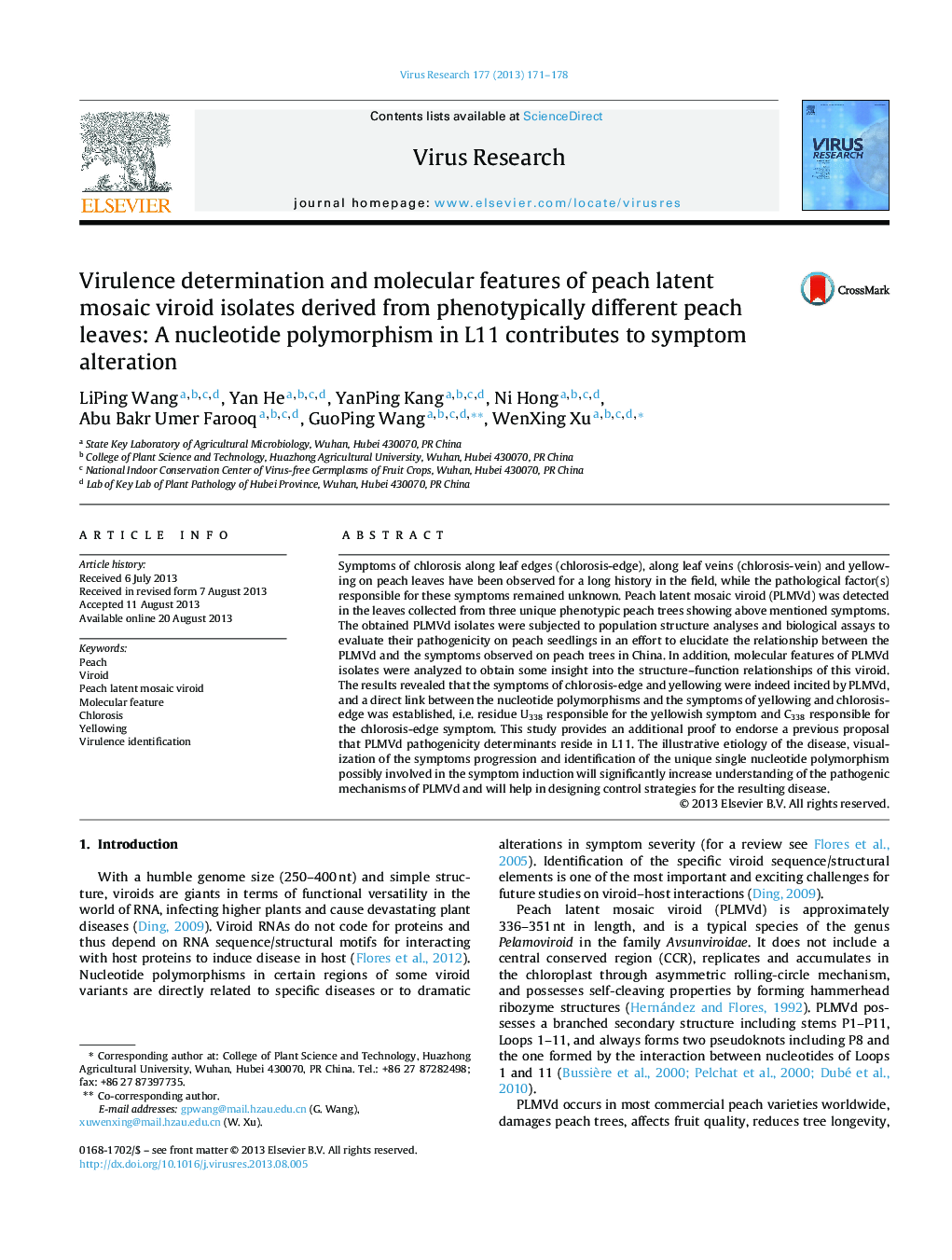| Article ID | Journal | Published Year | Pages | File Type |
|---|---|---|---|---|
| 6142786 | Virus Research | 2013 | 8 Pages |
â¢Two symptoms on peach tree were revealed to be incited by PLMVd.â¢The residues related to the resulted symptom expression were revealed in PLMVd.â¢Residue U338 in PLMVd responsible for the yellowish symptom was suggested.â¢Residue C338 in PLMVd responsible for the chlorosis-edge symptom was suggested.â¢An additional proof suggested that PLMVd pathogenicity determinants reside in L11.
Symptoms of chlorosis along leaf edges (chlorosis-edge), along leaf veins (chlorosis-vein) and yellowing on peach leaves have been observed for a long history in the field, while the pathological factor(s) responsible for these symptoms remained unknown. Peach latent mosaic viroid (PLMVd) was detected in the leaves collected from three unique phenotypic peach trees showing above mentioned symptoms. The obtained PLMVd isolates were subjected to population structure analyses and biological assays to evaluate their pathogenicity on peach seedlings in an effort to elucidate the relationship between the PLMVd and the symptoms observed on peach trees in China. In addition, molecular features of PLMVd isolates were analyzed to obtain some insight into the structure-function relationships of this viroid. The results revealed that the symptoms of chlorosis-edge and yellowing were indeed incited by PLMVd, and a direct link between the nucleotide polymorphisms and the symptoms of yellowing and chlorosis-edge was established, i.e. residue U338 responsible for the yellowish symptom and C338 responsible for the chlorosis-edge symptom. This study provides an additional proof to endorse a previous proposal that PLMVd pathogenicity determinants reside in L11. The illustrative etiology of the disease, visualization of the symptoms progression and identification of the unique single nucleotide polymorphism possibly involved in the symptom induction will significantly increase understanding of the pathogenic mechanisms of PLMVd and will help in designing control strategies for the resulting disease.
